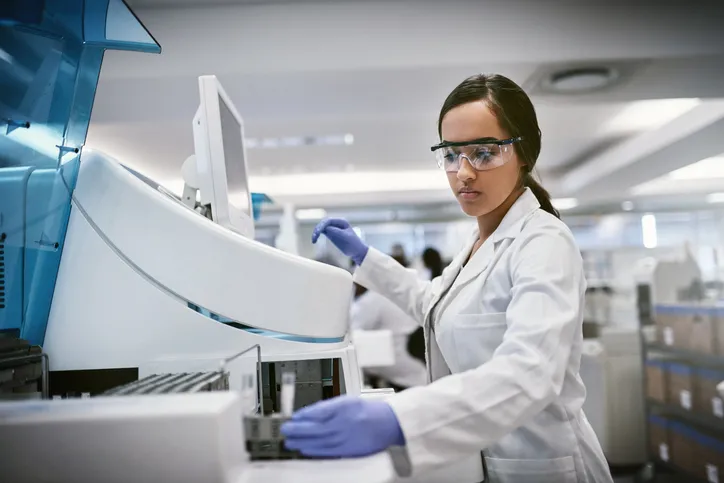In medical technology, global collaboration and robust research and development are driving innovation. Success in the MedTech industry, where regulations change frequently and healthcare systems are often not designed to reimburse innovative medical devices, requires strategic planning that considers early regulatory, and pricing and reimbursement strategies. The services of our company Justin Stindt Consultants seamlessly align with the needs of the MedTech industry to ensure successful market access for medical devices in this dynamic environment.
MedTech Includes Many Different Products Each With Unique Market Access Challenges
MedTech encompasses a wide range of products, services and solutions designed to save and improve lives. Unlike the pharmaceutical and biotech industries focused on products with pharmacological action, medical devices are products, equipment, or software intended for a medical purpose with predominantly a mechanical action of technology. From stents over imaging machines such as PET scans to software, the medical technology industry covers a broad spectrum of products. There are three main types of MedTech products, each with unique challenges and routes to market:

- Medical devices, ranging from instruments and appliances to software and implants, serve various medical purposes, including diagnosis, monitoring, prevention, treatment, and alleviation of disease, injury, or disability.
- In vitro diagnostic tests (IVDs) are a specific subset of medical devices that provide valuable information without direct contact with individuals and contribute to healthcare decision-making. Examples range from hepatitis and HIV tests to pregnancy tests.
- And finally, Digital health and care uses information and communication technologies to improve prevention, diagnosis, treatment and lifestyle management. As healthcare evolves toward personalized, predictive and precision approaches, digital tools play a central role. The future envisions integrated, value-based healthcare with a strong focus on patient outcomes, all driven by the central role of data in driving innovation. More information on e-health and our firm’s services can be found here.
Other types of products or services can be considered MedTech if they primarily target healthcare markets and share key regulatory, clinical and/or commercial pathways with medical devices.
A Dynamic Regulatory Environment for Medical Devices
In the rapidly evolving medical technology landscape, constant innovation is driven by robust research and development efforts and collaboration with end users. With a global R&D investment rate of approximately 8%, the industry experiences a continuous cycle of advancement, resulting in improved products every 18-24 months.
For medical devices in the EU, manufacturers affix a CE (Conformité Européenne) mark to a medical device after successfully completing a conformity assessment, which typically includes an audit of the manufacturer’s quality system and a review of technical documentation related to the device’s safety and performance. Accredited Notified Bodies in EU Member States are designated to carry out these assessments, and for high-risk devices, expert panel opinions may be sought before the certificate of conformity is issued. The NANDO database lists 1422 Notified Bodies, e.g. the TÜV in Germany. In the US medical devices require FDA certification.
The medtech sector is currently undergoing a regulatory transformation in the European Union. First, the in vitro diagnostic (IVD) sector, under the governance of Regulation 2017/746/EU, introduced a novel risk-based classification system for IVDs to determine the level of involvement of notified bodies in the pre- and post-market assessment of these devices. Second, the introduction of the Medical Device Regulation (MDR) on May 26, 2021, marked a significant shift in the regulation of the manufacture and distribution of medical devices in the European Union.
Furthermore, the different types of medical devices (i.e., medicines used in combination with a medical device, medical devices with an ancillary medicinal substance, in vitro diagnostics, medical devices made of substances that are systemically absorbed, and high-risk medical devices) are each subject to specific rules based on their characteristics.
Pricing & Reimbursement Challenges in the Medtech Industry
The inherent mismatch between healthcare systems and reimbursement systems, which are typically not structured to accommodate the reimbursement of medical devices and healthcare applications, is a challenge for MedTech companies. This challenge is compounded by the stringent nature of new regulations, which require careful planning when developing device reimbursement strategies. Navigating the complex landscape of bringing innovative medical technologies to patients requires a strategic and multi-faceted approach. This process involves extensive research and development cycles characterized by long timelines, high attrition rates, and significant upfront investments before positive returns are realized. In this challenging environment, ensuring successful market access becomes a critical objective, requiring consideration of steps such as early Pricing & Reimbursement strategy, regulatory registration and approval (CE marking for European market access and the FDA for US market access), clinical validation, and the formulation of national, regional and local pricing and reimbursement strategies.
Market Access for medical devices and in vitro diagnostics is also a dynamic process over the product lifecycle, funding opportunities often start with academic hospitals with dedicated research budgets, continue with temporary funding mechanisms for innovative technologies and ideally culminate in permanent reimbursement codes for the device or class of devices.While regulatory approval allows for the commercialization of a novel medical device or in vitro diagnostic, reimbursement is not automatically granted and is often an uphill battle.
Manufacturers of Medical Devices need to carefully analyze the Pricing & Reimbursement pathways applicable and identify funding opportunities over the product lifecycle. In the early stages academic institutions, trials and patient self-pay may represent the only options for coverage. However, several countries have established pathways for temporary (extra) funding for innovative medical devices. Examples of this are the “forfait innovation” in France and the NUB pathway in Germany. In order to obtain a universal and sustainable source of funding most medical devices require a funding code in a fee-for-service catalogue which is a lengthy process that can take several years and requires significant investment and support. Sometimes existing reimbursement codes such as the Current Procedural Terminology (CPT) codes in the US, the “Classification Commune des Actes Médicaux” (CCAM) in France, and the “Einheitlicher Bewertungsmaßstab” (EBM) in Germany (outpatient care) can represent a solution but for most innovative medical devices or in vitro diagnostic these do not exist.
Our company experts are at the forefront of the implications of HTA Regulation 2021/2282 and the potential eligibility/requirements for joint clinical assessments (JCA) of medical technologies.
Justin Stindt Consultants, Your Agency for Medical Device Market Access

Our agency supports MedTech clients at all stages of the product lifecycle by addressing the unique challenges of the medical technology industry. As the MedTech landscape evolves with continuous innovation, our firm’s experts provide tailored solutions to navigate market access changes, particularly in the European Union and the US. Our firm’s consultants understand the critical importance of adapting to new regulations, such as the in vitro diagnostics (IVD) sector’s transition under Regulation 2017/746/EU or he Regulation (EU) 2021/2282 on health technology assessment (HTAR).
Our company’s services seamlessly align with the needs of the MedTech industry, ensuring successful market access in this dynamic environment. Our agency has a strong track record in helping MedTech clients design evidence-generation studies and programs that meet key decision-makers’ expectations and, therefore, increase the likelihood of successful reimbursement and allow for potential premium pricing. To this end, our consulting agency’s experts recommend a tailored approach (i.e. advisory board, scientific consultation, primary research, etc) based on our client’s objectives, and the type and development stage of the medical technology. As a MedTech industry vendor, we also partner with our clients to deliver pricing and reimbursement strategies that are actionable, enable access, and maximize the chances of achieving sustainable pricing and reimbursement. Whether you are exploring early access, regulatory / Market access pathways, or developing Pricing & Reimbursement dossiers, our consultants operate globally, including key markets such as the US and major European countries. As a service provider to the MedTech industry, we have helped companies with developing and implementing Pricing & Reimbursement strategies for in vitro diagnostics, implantable medical devices, and outpatient medical devices for use by patients at home, just to name a few.
Contact our experts today to explore how Justin Stindt Consultants can support your medical technology ventures, providing targeted strategies for market access and commercial success for medical devices amidst industry evolution and regulatory changes.
CLIENT TESTIMONIALS








